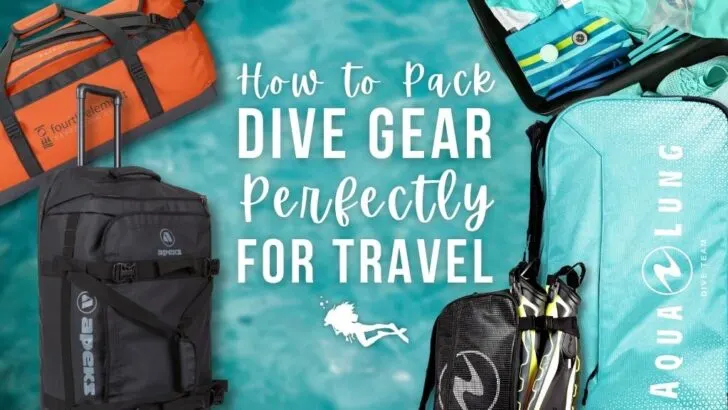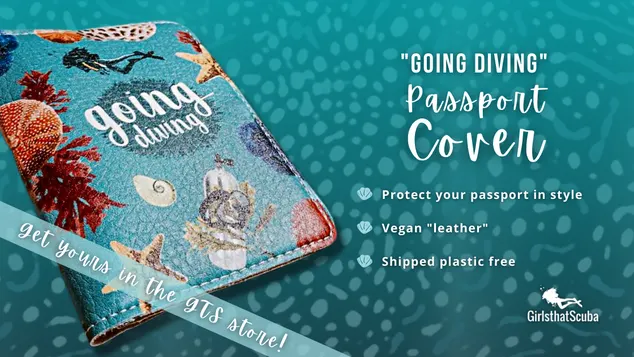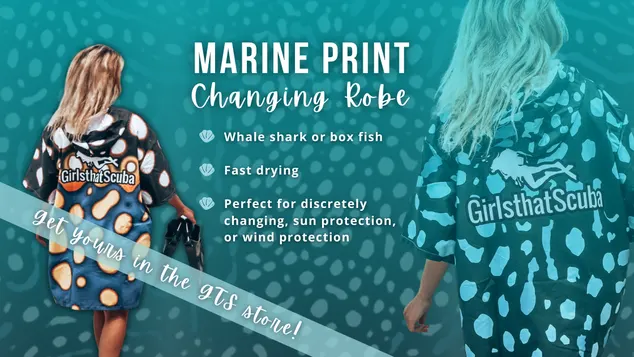Love travelling but hate travelling with dive gear? Us too. Luckily, after a few years of running our Girls that Scuba Trips, we know exactly how to pack scuba gear for travel.
From what type of bag to pack it all in, to which items should go in the hold and which need to be in the cabin, this is your ultimate guide for packing scuba equipment. Packing for a liveaboard? We’ve got a guide to that too!
What bag should I pack my dive gear in?
First things first, if you’re packing scuba gear you need a bag to put it in. There’s a huge variety of dive bags available – from hard cases to rolling duffels. Here are some of the favourites from the Girls that Scuba community.
Best Roller Bags
When it comes to carrying heavy dive bags around airports, roller bags offer a lot of ease. However, it’s worth noting that they tend to be on the heavier side. Most weigh around 4-5 kg which will eat into your luggage allowance.
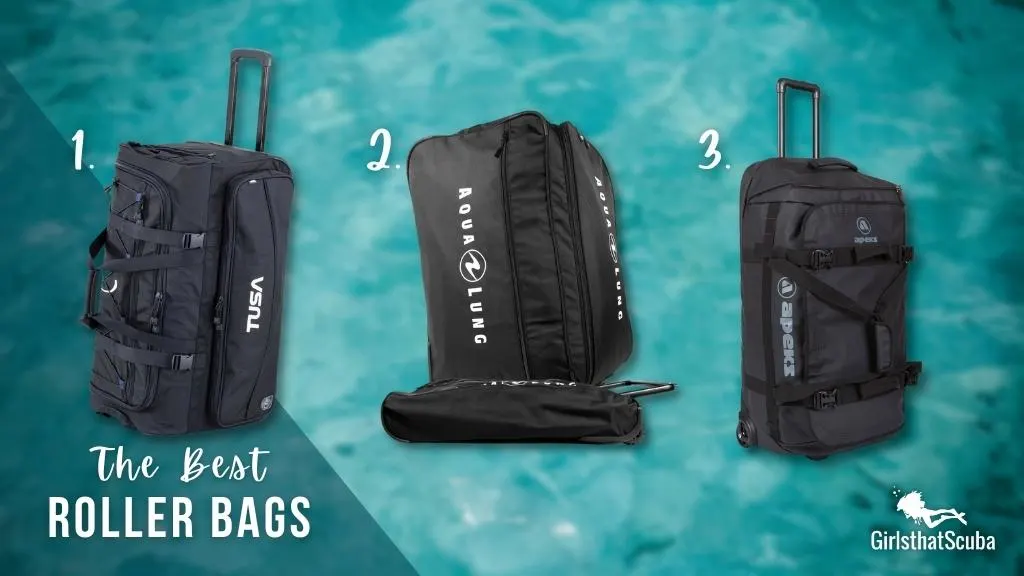
- TUSA Roller Duffle Bag
This large roller has a huge inner compartment, with a number of extra pockets for storing all your scuba accessories.
Shop from the US
Shop from the UK - Aqualung Explorer II Folder Bag
Stretched for dive storage space at home? This folding roller is ideal as it lays flat when empty and not in use.
Shop from the US
Shop from the UK - Apeks Roller Bag 40L or 90L
Tropical diver travelling with less gear? If you’re after a slightly more lightweight option, Apeks’s sleek Roller Bag comes in both a 40L or a 90L size.
Shop from the US
Shop from the UK
Best Duffle Bags
If you’re not having to carry your gear as much, a duffle can be a great option for packing dive kit. They’re often incredibly sturdy so can last you years of diving!
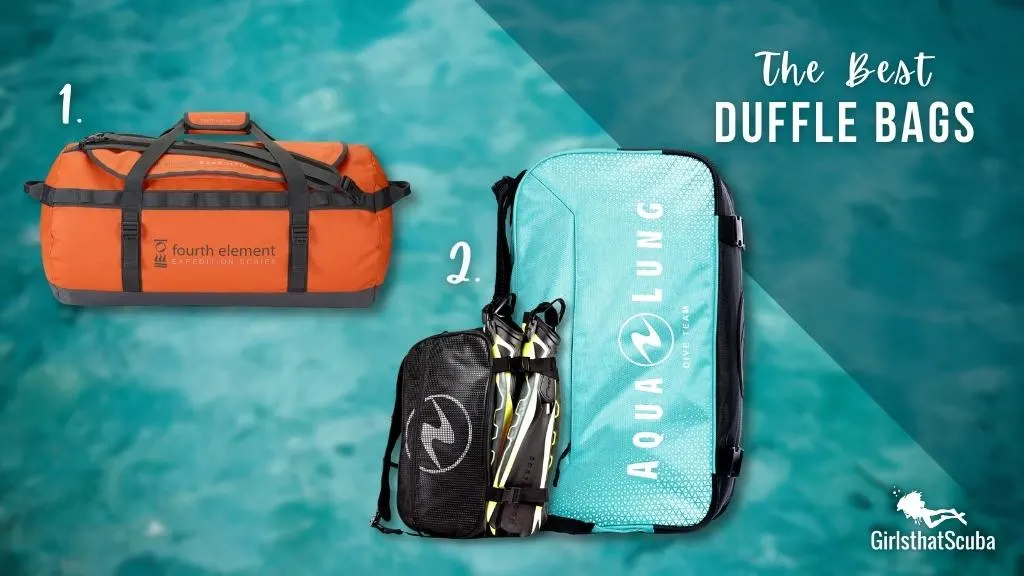
- Fourth Element Expedition Duffle Bag
This durable dive holdall with handy backpack straps comes in three sizes – 60L, 90L, or a whopping 120L. You certainly won’t miss the bright orange colour on the luggage carousel. If that shade’s not for you, though, it also comes in blue.
Shop from the US
Shop from the UK - Aqualung Explorer II Duffle Pack
If you’re after something duffle-style but cabin-sized, look no further. We love the range of colours this sturdy backpack comes in. It also has handy straps on the outside for holding your fins.
Shop from the US
Shop from the UK
Non-Diving Bags
Many of our GTS members prefer to travel with un-branded bags. After all, a bag with a dive brand written on the outside is advertising potentially expensive contents.
We love the Osprey Transporter Wheeled Duffle. This durable, weather-resistant rolling bag is a much more subtle way of travelling with scuba gear.
Shop from the US
Shop from Europe
Can I carry on dive gear in hand luggage?
Once you’ve figured out what bag you’re packing, the next step is to choose what goes where. There are some pieces of equipment which are better off in your hand luggage and others which are fine in the hold. Some of your kit also must travel in one or the other! Here are our tips.
Hand Luggage
Many divers like to keep their essentials close. Regulators and dive computers are a top choice to keep in your cabin bag. These are sensitive items which are most responsible for your safety. Your regs are literally keeping you alive underwater!
We’ve all seen how our luggage gets handled at airports, so this one’s pretty understandable. Also, in the event that your main bag gets lost, these are nice to have as a minimum rather than renting them.
Cameras are another delicate item which are often best kept in your carry-on. A lot of time and money goes into creating the perfect underwater camera set-up, so you want to know it’s being handled correctly. Any spare batteries must also be in your hand luggage – these can’t go in the hold. This also goes for any batteries for dive lights or torches.
If you have a small amount of extra space, your mask is also a nice addition to your hand luggage. Again, your own mask will always be nicer in case your hold baggage goes missing. A swimsuit or bikini is another small item which will ensure you can dive.
Finally, you may want to consider having your fins in your hand luggage. Well, less in, and more on. Some airlines will allow you to strap your fins to the outside of a backpack to carry them on. This can save space and weight in your main bag, or be a solution if your fins are on the larger side!
Hold Luggage
There are a couple of items you’ll want to make sure AREN’T in your hand luggage. Any dive knives or cutting tools should be kept in your stowed baggage. They’ll be quickly removed from you at security if you forget them. If you have a knife mounted on a hose and you’re taking your regulators in hand luggage, double check it’s been removed.
Reels are another one which may be a security risk – you’ll want to make sure these are in the hold rather than attached to your DSMB in hand luggage.
How to pack scuba gear for travel in hold luggage
You know what bag you’re taking, you know what’s going where. Now let’s pack it up!
Small Accessories
Small dive accessories such as masks, DSMBs, boots, hoods, or gloves, can be packed into your fin pockets. This is valuable space which can often be forgotten about, so pop a few accessories in there before you pack your fins into the bag.
Fins First
If your fins are going in your main bag (rather than being strapped to your hand luggage), you’ll probably want to pack them in first. They’re one of the biggest pieces of your kit, so they’ll take up some real estate in your bag. If your luggage is a duffel or similar, packing your fins down either side of the bag is a great way to add some structure and protect the rest of your delicate gear.
BCD Next
BCDs are generally a bulkier item, so it can be useful to pack those in at the bottom to ensure you have space for them. Make sure you remove all the air from your BCD so it’s as small as it can possibly be. It can help to remove your inflator hose for this and pack it separately.
Use Wetsuit for Padding
If you do choose to pack more delicate items (such as regs or a camera) in your hold luggage, use your wetsuit to protect them! All that neoprene is extremely protective for more sensitive equipment.
Bonus tips for travelling with dive gear
You’ve got pretty much all of our wisdom now for packing your dive gear… but here are a couple of bonus tips!
We all know that diving in incredible destinations often requires some epic journeys. Short layovers are definitely a risk for losing your dive luggage, so AirTags are a great addition. Pop one into each of your bags, and you can check where they are at all times with a quick glance on your phone.
Our final tip isn’t something you strictly need to pack, but it’s definitely something you shouldn’t be diving or travelling without. Make sure you don’t travel without insurance! This applies to both dive insurance and travel insurance. We love DiveAssure for combined dive and travel policies.
How do you pack your dive gear? Share in our Girls that Scuba group, or tag us on Instagram!

